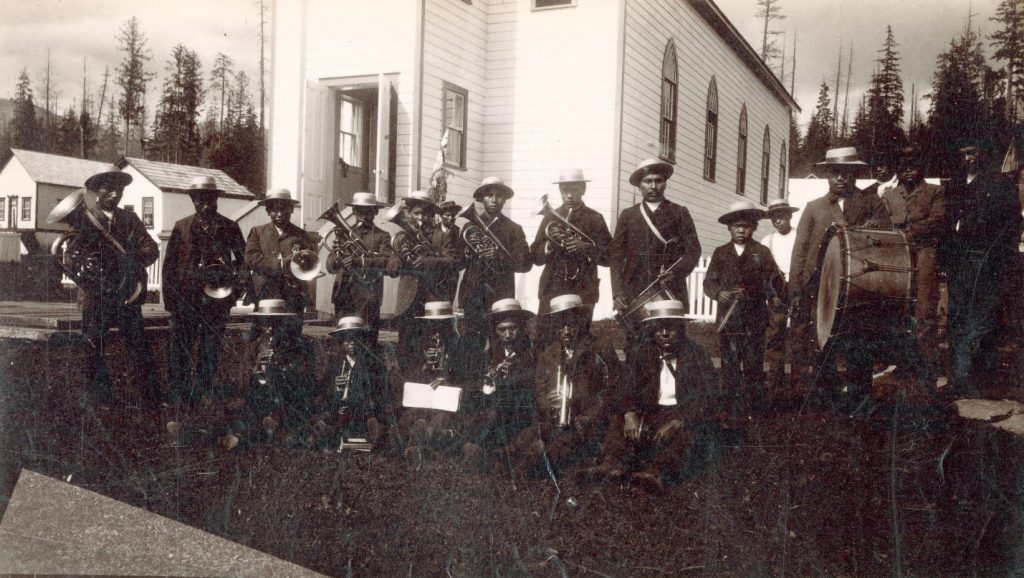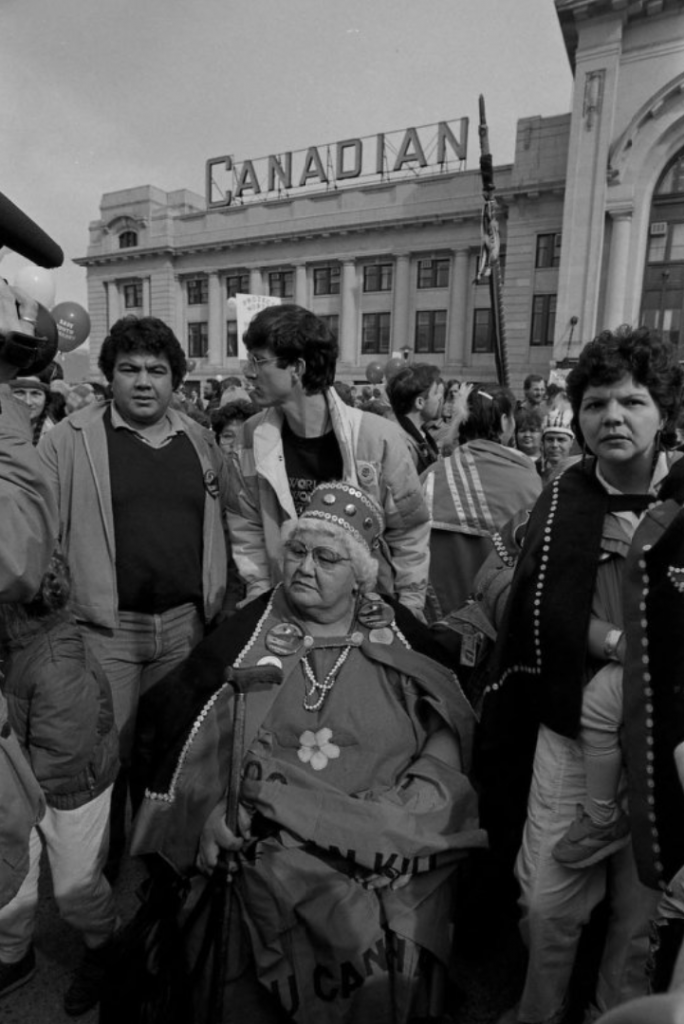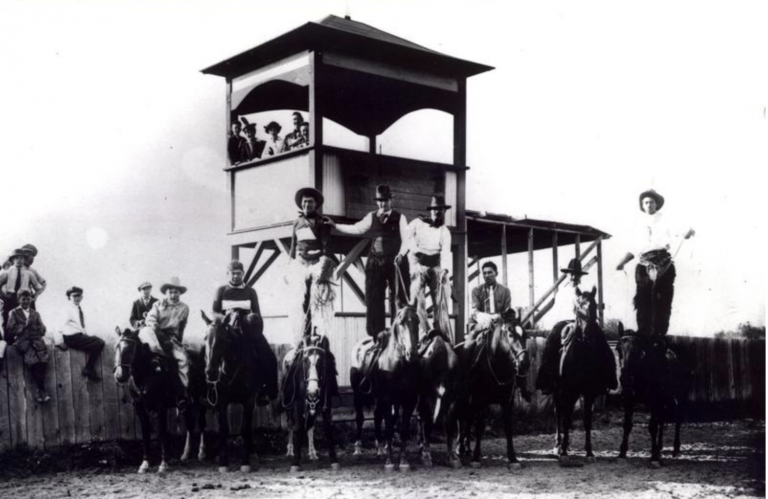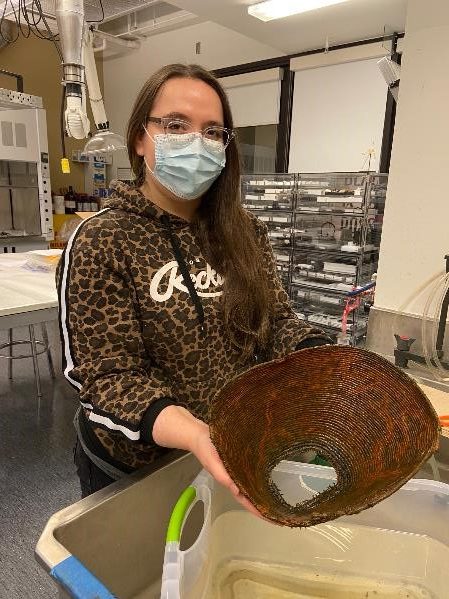The Indigenous Internship Program at the Museum of Anthropology is creating opportunities for Indigenous people who are interested in cultural heritage management while training in work in a museum setting. This new internship program has been developed by six Indigenous partners: the Musqueam Indian Band, the Squamish Lil’wat Cultural Centre, the Haida Gwaii Museum, the U’mista Cultural Society, the Nlaka’pamux Nation, and the Coqualeetza Cultural Society, along with MOA. The program is sponsored by Heritage Canada Museums Assistance Program and Mellon Foundation.
These are the stories about the personal, revealing and sometimes surprising research that members of the Indigenous Internship Program conducted during their internships at MOA.

Marc Williams from the Squamish and Wet’suwet’en First Nations discovered the history of brass bands within Indigenous communities during their time as an intern in the program. They share their experience writing, “It was an exciting find! As I was going through a photographic archive online, I came across some black-and-white images from the late 1800s to early 1900s of men from my nation. The men are wearing uniforms and white hats and are holding brass instruments. In one photo they are posed and looking at the camera, the back row standing and the front row kneeling. In the other photo, the men are paying no mind to the photographer while they are in a field practicing their instruments.”

Ks’aan Moody of the Haida Nation also made some surprising research discoveries. During her internship, she came across two badge pins that are connected to the historic anti-logging protest of 1985 at Athlii Gwaaii-Lyell Island. She shares how the protesters from the Haida Nation and their allies “drew a line in the sand” to stop logging on their lands. “Today we are taught from a very young age about this historic protest and its impact for our nation and community. It is a pride we all carry with us every day. Younger generations continue to fight for what is right and for what is right for the earth. When I hold these badge pins, I am transported to this time when my people showed such courage and bravery. It makes me feel proud to connect with these meaningful treasures,” writes Moody.
Learn more at https://moa.ubc.ca/2021/12/stories-from-the-indigenous-internship-program-a-line-in-the-sand/

Elsie Joe of the Nłeʔkepmx Nation explored the history of rodeos among Indigenous communities in British Columbia. Inspired by the tradition of rodeos in the BC interior—a tradition that is present to this day—Joe went through archival photographs from the Okanagan Trust Society, the Canadian Museum of History and the British Library and found numerous photographs. These photographs from the early 1900s showed Indigenous people and settlers participating in rodeos on equal ground, something that was uncommon during that era. In Joe’s words, “My family loves rodeos because of their inclusivity and exciting atmosphere. Rodeos are places where everyone can be among friends and marvel at the competitors’ astounding and courageous athletic performances. During the time I spent doing this research, I felt new connections to people from the past. I have gained a greater appreciation of the history of rodeos and am excited to share these images and stories with my family and community.”
Learn more at https://moa.ubc.ca/2021/12/stories-from-the-indigenous-internship-program-rodeos-in-the-archive/

Another intern from the program was Kelsey Sparrow from the Musqueam/Anishnaabe Nation. Her journey as an intern involved studying a basket discovered in the mud banks on the Fraser River. Assumed to have been made 400 to 80 years ago, the cedar-root basket is considered to be archaeological evidence of Musqueam basketry. Sparrow’s excitement could not be contained when she held the basket for the first time. “There are no words… I actually teared up a bit while holding it. Reflecting back now, I would say it felt joyful, it felt significant, and it felt like meeting someone.”
Learn more at https://moa.ubc.ca/2021/12/stories-from-the-indigenous-internship-program-meeting-a-basket/
Through Action 21 under Goal 5 of the Indigenous Strategic Plan and Strategy 17: Indigenous Engagement of the UBC Strategic Plan, the university is committed to partnering with Indigenous communities to dedicate spaces for Indigenous students, faculty and staff to practice and celebrate their cultures.